One of the most popular duck species in the world, mallard ducks eat a wide variety of things. Often striking because of their blue and green accent feathers, you will find mallards in your local park or pond, any day of the week!
So, what do mallard ducks eat? Mallard ducks eat plant matter, bugs, grains, and small fish. They are omnivorous, but particularly prefer plant matter over carnivorous options.
But how much should a mallard eat per day, and what treats can you give your pet mallard duck to try out? Let’s learn about this common waterfowl now.
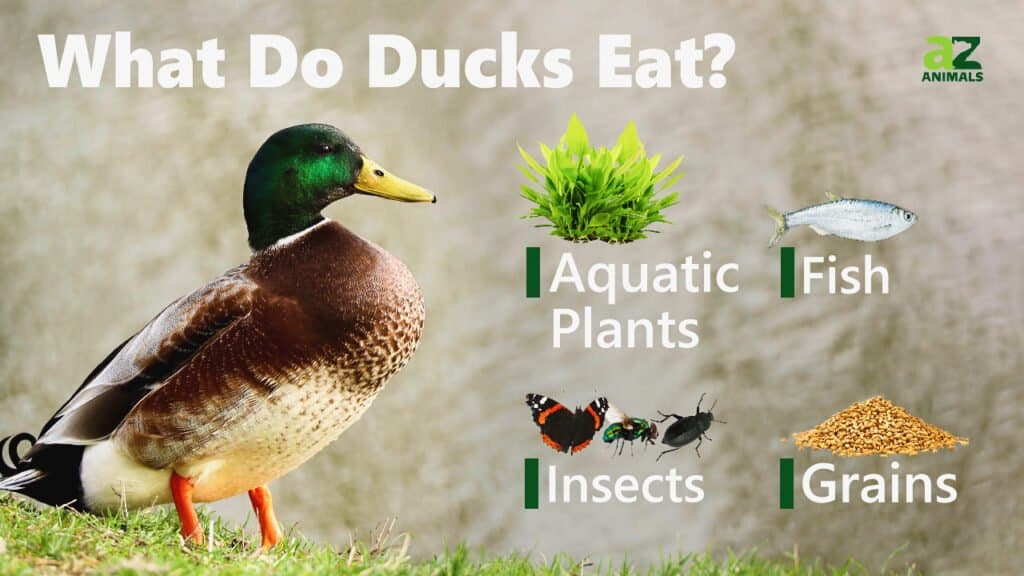
What Does a Mallard Duck Eat?
A mallard duck eats plant material from roots and leaves, seeds such as acorns, bugs and invertebrates, and even small fish. They are opportunistic eaters, weeding through tall grasses and riverbeds for their food.
Mallards enjoy seeds greatly, according to Oecologia. The amount of seeds they eat and pass helps improve the spread of many different plant seeds. Mallards digest an average of 70% of the seeds they eat, leaving the remaining 30% undigested and capable of growing more plants from it.
It is important to note that many breads are bad for mallards. While certain grains and Seed varieties are safe and recommended to feed your local duck pond, bread has the capability of carrying many bacterias and diseases that can harm local duck populations.
It is more important to bring along fresh vegetables and produce with you if you want to feed your local ducks. Let’s take a look at some more complete list of what a mallard duck may enjoy eating.
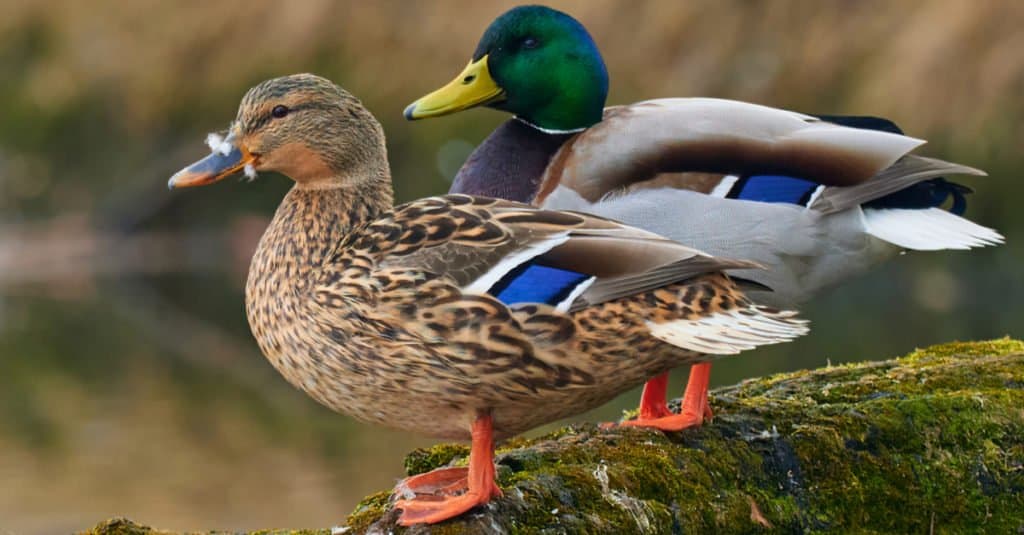
.
©Robert Adami/Shutterstock.com
A Complete List of 15 Foods Mallard Ducks Eat
A mallard duck has been known to eat the following foods:
- Seeds
- Cracked corn
- Grains, such as barley
- Fruit
- Vegetables
- Chopped lettuce
- Aquatic plant matter
- Grass
- Flowering plants
- Tree leaves
- Bugs and insects
- Aquatic invertebrates
- Small fish
- Mollusks
- Worms
Mallards are not very picky eaters. This is why you may be wondering why you can’t feed them your old moldy bread. It is important to note that just because a mallard duck seems excited about a certain food, it doesn’t mean that you should feed it to them.
Mallards use their beaks to sift through plant matter and water in order to find their food. They enjoy pecking and hunting through grains and plant matter, much like many other species of bird.
According to The Journal of Wildlife Management, mallard ducks often seek out invertebrates or bugs, especially during winter. They require some level of protein in their diets, though winter may make such foods difficult to come by.
This is why many mallards eat plant matter as the majority of their diet. This includes seeds and corn, but primarily includes grass from farmlands or aquatic plants. They will even eat fish or other water invertebrates, but prefer plant matter over all things.
Mallard ducks have also been known to eat fish eggs. Mallard ducks have been known to pass viable fish eggs through their digestive system, leaving baby fish alive and capable of living on!

How Much Does a Mallard Duck Eat?
A mallard duck eats anywhere from 70-120 grams of grain per day, according to the Wildlife Society Bulletin. The amount of food depends on the size of the mallard duck, their age, location, and whether it is a pet or a wild duck.
Mallard ducks are often free grazers, eating whatever comes across their beaks. They dive for food often, sticking their feathered tails in the air as they bob on the water. It is important to pay attention to how much you are feeding your captive ducks, as they tend to eat whatever is put in front of them. But more on that later.
Mallard ducks enjoy foraging on land, packing through grassland and dirt for bugs and seeds. They eat a lot of wasted grain, such as corn and husked oats or barley. The green headed male mallard ducks often get lost in large fields of plant matter.
Mallard ducklings often eat more aquatic protein than grown ducks. This could be because they need to learn how to properly hunt, and diving for food is much more difficult than simply foraging on land. Plus, ducklings often need more protein when they are young.
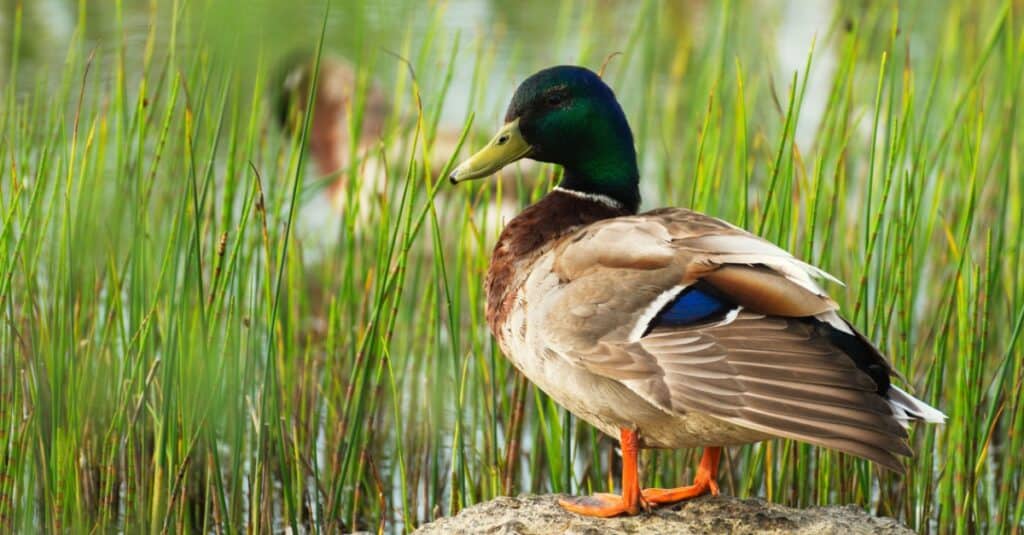
.
©iStock.com/M-Production
What Eats Mallard Ducks? Common Predators
The mallard duck has many common predators, including:
Mallard ducks are one of the most commonly hunted ducks in the United States. They are a very common breed of duck, so this is not unheard of. Many hunting dogs are trained to hunt mallard ducks in particular.
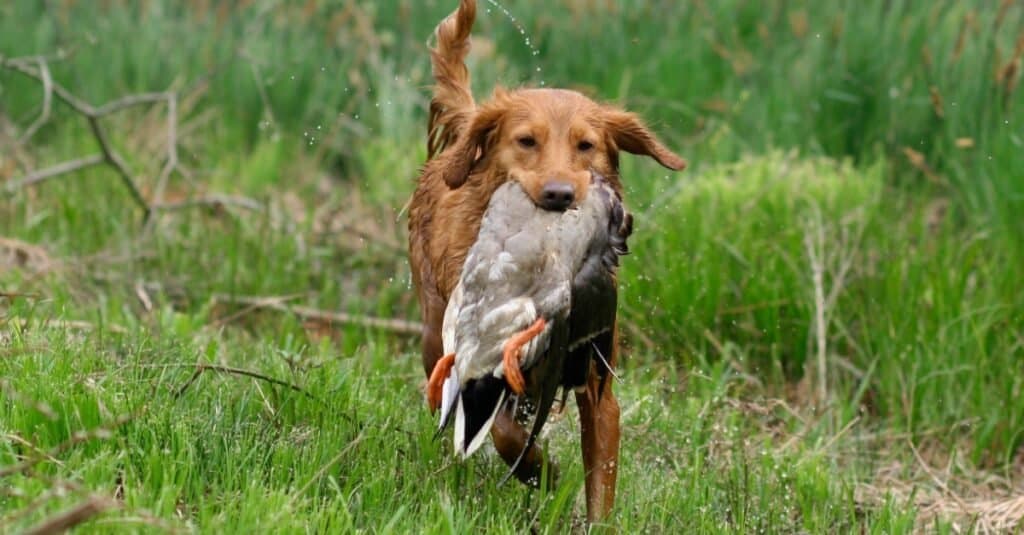
Mallard ducks are one of the most commonly hunted ducks in the United States.
©iStock.com/Azoogle
Mallard ducklings often fall victim to predators, given their limited abilities for escape. They can’t fly right away, and are very slow runners and swimmers at first. Grown mallards are also at risk to predators, but are more capable of flying away.
What To Feed Mallard Ducks as a Pet
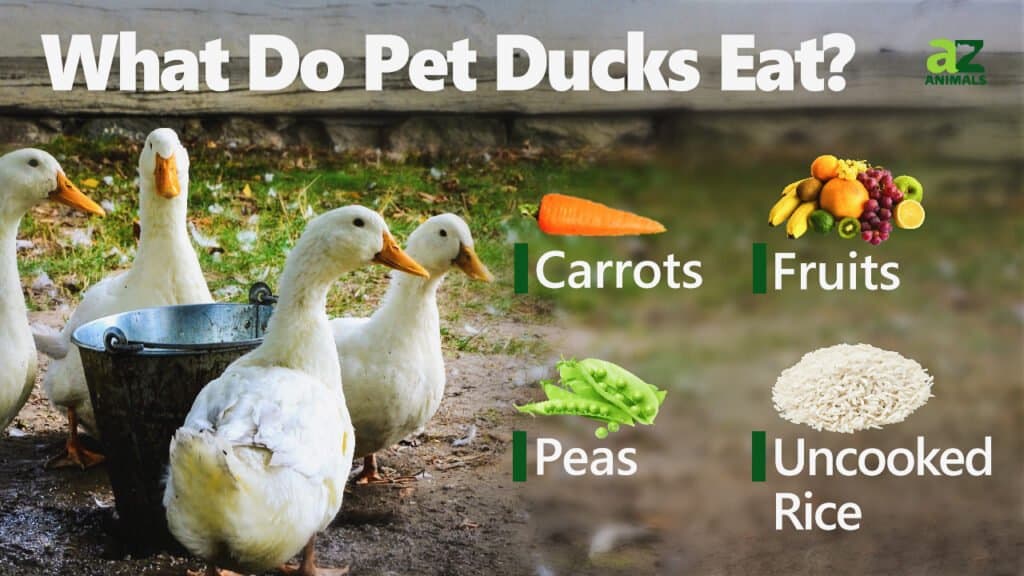
Your pet mallard ducks eat a variety of things. Here are some of a duck’s favorite treats:
- Apples
- Bananas
- Berries
- Lettuce
- Dandelion greens
- Fresh peas
- Corn
- Tomatoes
- Kitchen scraps (even fish or meat)
- Cucumber
- Sweet potato
- Cracked corn
- Barley
- Other grains
It is important to note that a duck’s mouth is only so large. It is recommended to never feed a duck anything too big, given their inability to chew and swallow very well. However, your duck will no doubt enjoy any of these tasty treats!
The photo featured at the top of this post is © iStock.com/M-Production
Thank you for reading! Have some feedback for us? Contact the AZ Animals editorial team.






